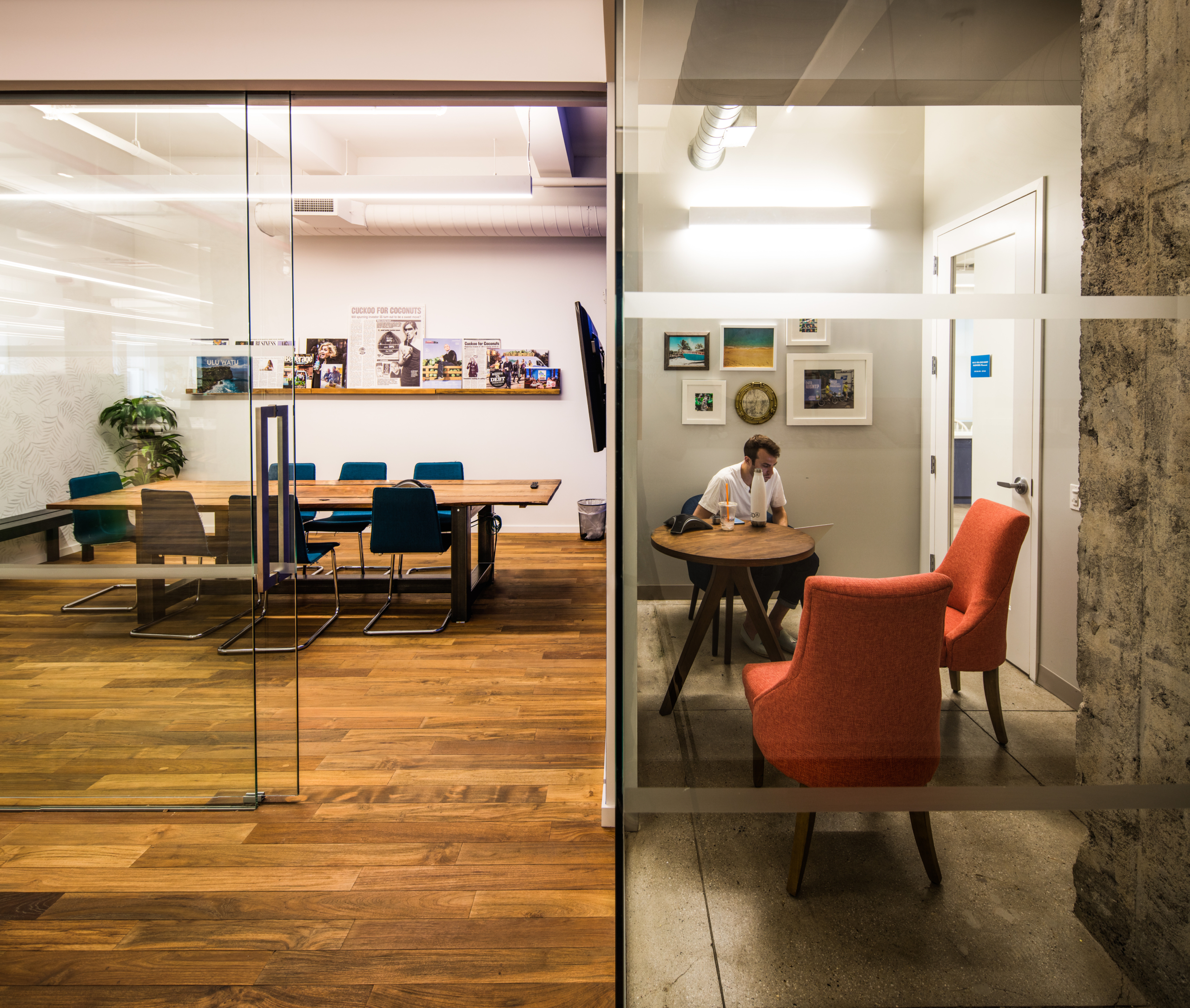Any part of the current headlines tell us that companies are still adjusting to the impact of working from home during the pandemic. And while many senior leaders may have a preference of five days in the office, they are hearing the bubbles of dissension rising up that there needs to be more flexibility. Not everyone works as well in the office five days a week – some fare better with flexibility, dependent on the work in front of them and their access to materials and colleagues. While companies are relocating spaces to accommodate new needs, we’re seeing a paradigm shift in office designs towards a people-first work environment.
The Office As A Library
In shifting to this design mentality, the office allows employees to have more choices in their work environment and have the material and technology access that accommodates their needs and styles— similar to how a local or college library functions. Programmatically, this would be an environment that transitions from more active areas that provide the social collaboration we have all been craving to more intimate spaces, like the peaceful environment we have while working remotely.
Let’s discuss the program further:
- “The Study” – quiet and peaceful
- A space intended for individual-focused working, material review, or intimate one on one meetings.
- This section of the office incorporates unassigned working spaces such as tables, nooks, and private phone rooms.
- Inspired by the openness of an open floor plan but specifically designed to reduce the noise and commotion.
- “The Vestibule” – the transition between loud and quiet
- Expressed as spaces that offer a physical separation between active and peaceful. Think conference rooms, workstations, and lounges.
- This section of the office offers both intimate areas to concentrate and more active workspaces like you would find in a traditional office environment.
- “The Grounds” – loud and active
- Defined as an area that incorporates all of the office’s break-time infrastructure, including pantries, collaboration spaces, and break-out rooms.
- This is the main area within the office that encourages social interaction— like a library café.
- Office workers have missed the spontaneous encounters with colleagues while working remotely, and these spaces will inspire them to want to come back to the office.
“The Office as a Library” paradigm emphasizes a people-first approach by providing options in the work environment that are directly based on individual work styles and productivity needs. Paired with careful programmatic consideration, it offers ample space for social interaction and collaboration while still feeling peaceful and homey. This type of designed flexibility is essential to creating a safer and more productive work environment than the one we are leaving behind.




Leave A Comment